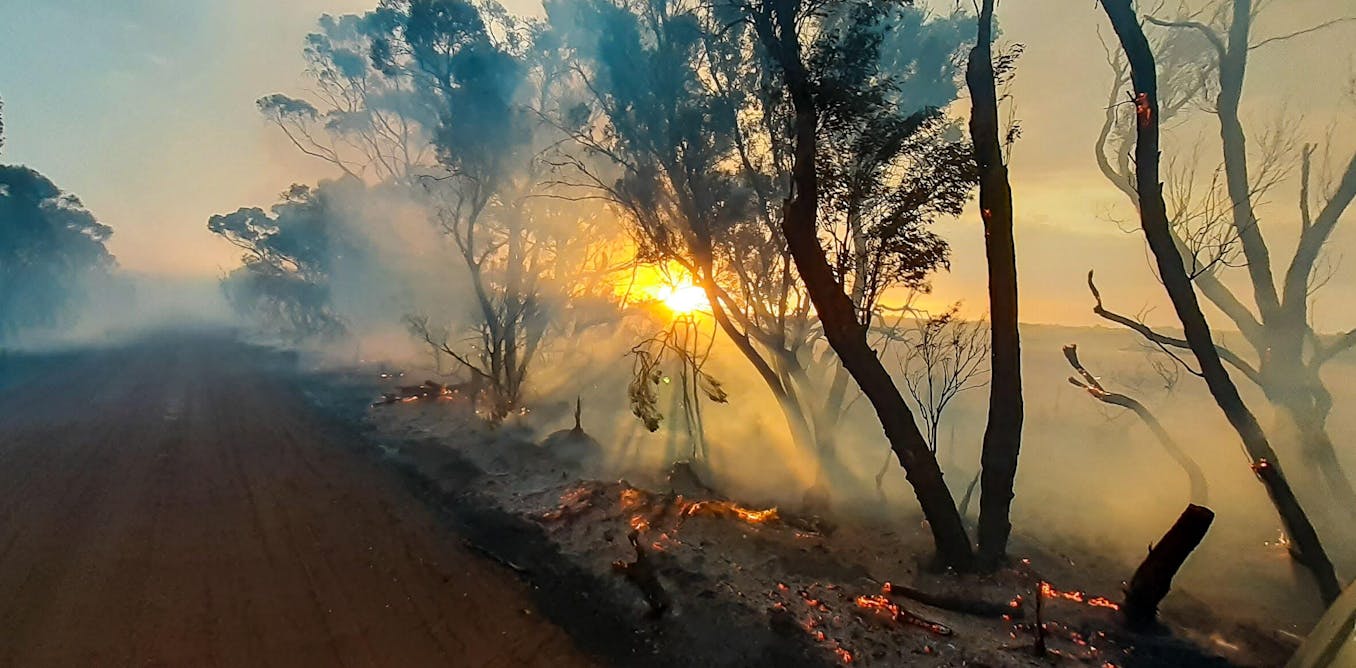Planning for Security: Establishing an Efficient Bushfire Management Plan
Planning for Security: Establishing an Efficient Bushfire Management Plan
Blog Article
Essential Tips for Bushfire Administration to Ensure Fire Security

Recognizing Bushfire Danger Degrees
Recognizing the varying levels of bushfire threat is crucial for efficient planning and prep work in mitigating potential hazards to buildings and lives. Bushfire threat levels are typically classified based upon factors such as weather conditions, gas availability, topography, and historical fire habits. By understanding these risk degrees, neighborhoods and people can proactively execute approaches to lower vulnerability and boost strength despite potential bushfire occasions.
The very first degree of bushfire risk is low danger, where the likelihood of a bushfire happening and creating considerable harm is marginal. This level frequently occurs throughout periods of reduced temperature levels, modest humidity, and minimal wind speeds. Moderate risk levels indicate a boosted possibility for bushfires as a result of escalating weather conditions or fuel accessibility. Risky degrees symbolize a considerable danger, with problems favorable to fast fire spread and extreme fire actions. Severe risk degrees are one of the most crucial, posing brewing threat to lives and homes as a result of severe weather conditions and very flammable gas.
Understanding these bushfire threat levels enables stakeholders to customize their preparedness and action actions as necessary, making sure a aggressive and reliable method to bushfire administration.
Creating a Defensible Space
Efficient bushfire administration begins with establishing a defensible space around buildings to boost security versus possible fire risks. A defensible area is a barrier zone that creates an obstacle in between a framework and the surrounding flammable greenery. This room acts as a crucial line of defense, providing firemans a risk-free area to run and assisting to lower the threat of a fire spreading out to the building.
When creating a defensible room, it is necessary to take into consideration the design of the residential property and the bordering landscape. Clearing up plant life, especially highly flammable plants, within a particular distance of the home can help protect against the rapid spread of fires. In addition, maintaining a well-irrigated area around the residential or commercial property can additionally boost its defensibility.
Routine maintenance of the defensible area is critical to ensure its efficiency. This includes trimming overhanging branches, getting rid of dead plants, and keeping the location free of debris. By spending time and effort into developing and maintaining a defensible space, homeowner can dramatically improve their opportunities of protecting their homes and assets throughout a bushfire.
Carrying Out Fire-Resistant Landscaping
When designing landscapes to alleviate the risk of bushfires, including fireproof aspects is important for improving property security and lowering fire hazards. Select plants with high moisture content, low oil content, and marginal dead greenery to decrease the danger of fire spread.

Creating an Emergency Situation Emptying Strategy
Developing an extensive emergency situation discharge strategy is essential for guaranteeing the safety and security and health of individuals throughout potential bushfire cases (BAL Report). An effective evacuation strategy should describe clear procedures to follow in the event of a bushfire hazard, including assigned evacuation paths, setting up points, and interaction protocols
To start producing an emergency situation evacuation plan, it is important to analyze the certain threats and vulnerabilities of your place. Recognize multiple evacuation paths that cause secure locations far from the fire, considering elements such as terrain, roadway accessibility, and prospective threats. Establish interaction networks to alert locals of an approaching discharge, utilizing methods such as alarms, message alerts, or door-to-door alerts.
Frequently evaluation and practice the evacuation plan with all locals or neighborhood participants to guarantee every person comprehends their responsibilities and roles. Conduct drills to test the effectiveness of the plan and make any kind of essential changes. By having a well-prepared discharge strategy in area, you can improve the possibilities of a orderly and secure discharge throughout company website a bushfire emergency.
Preserving Fire Safety And Security Equipment
After establishing a detailed emergency situation discharge plan for bushfire events, it is important to focus on you could check here the routine upkeep of fire security equipment to ensure optimum performance and preparedness. Normal upkeep of fire security equipment such as fire extinguishers, smoke detectors, fire alarms, and lawn sprinkler is essential in safeguarding lives and residential property throughout a bushfire. Performing regular examinations, screening, and maintenance of these devices by qualified specialists is vital to ensure they remain in functioning order when required.
Fire extinguishers should be inspected frequently for stress levels, noticeable damage, and correct performance. By faithfully preserving fire safety and security equipment, individuals can boost their preparedness and feedback capacities in the event of a bushfire.
Final Thought
To conclude, effective bushfire management includes recognizing danger levels, producing defensible spaces, implementing fireproof landscaping, developing discharge plans, and maintaining fire safety tools. By following these crucial pointers, individuals can make sure better fire defense and safety and security for their residential properties and areas. It is very important to prioritize aggressive procedures to alleviate the risks linked with bushfires and to be gotten ready for emergency situations.
By recognizing the subtleties of bushfire danger levels, developing defensible rooms, applying fireproof landscaping, creating comprehensive evacuation strategies, and guaranteeing the upkeep of fire safety and security devices, neighborhoods and individuals can significantly boost their resilience against the ravages of wildfires - BMP. These tips are not just crucial for protecting hop over to these guys versus prompt fire risks however additionally for promoting long-lasting fire defense methods that can make a substantial distinction in the face of escalating bushfire hazards
High-risk levels symbolize a substantial threat, with problems helpful to rapid fire spread and extreme fire habits. Routine maintenance of fire security tools such as fire extinguishers, smoke detectors, fire alarms, and lawn sprinkler systems is crucial in securing lives and residential or commercial property during a bushfire.In final thought, efficient bushfire administration includes recognizing threat degrees, developing defensible spaces, executing fireproof landscaping, developing evacuation strategies, and maintaining fire security tools.
Report this page